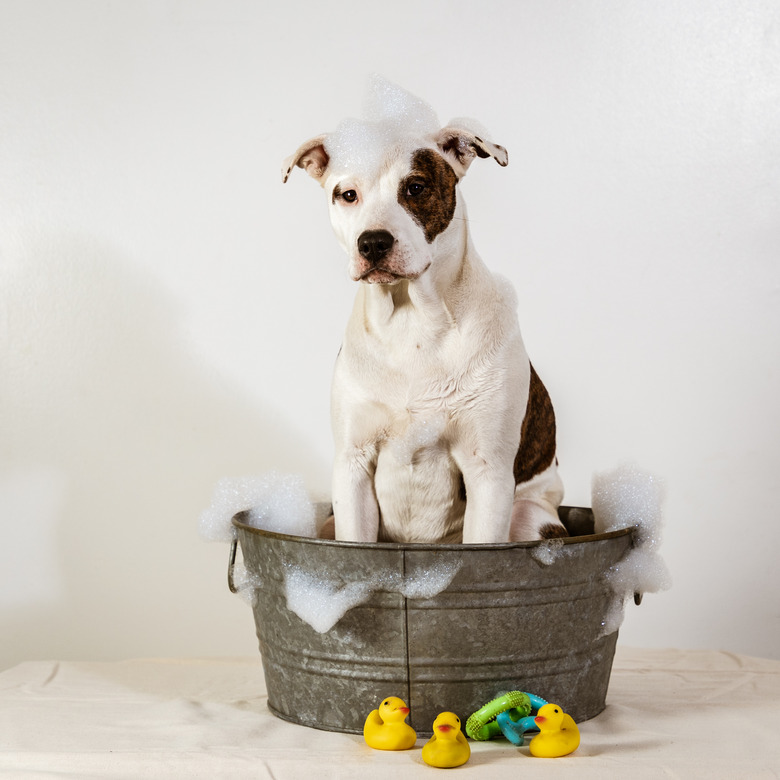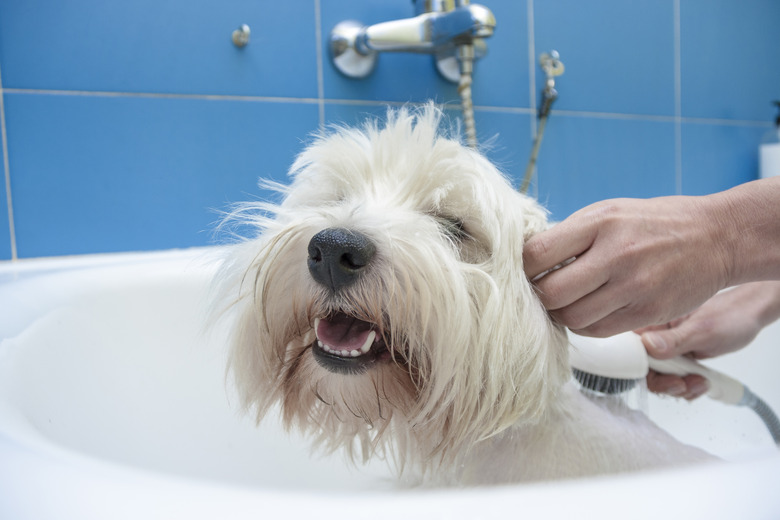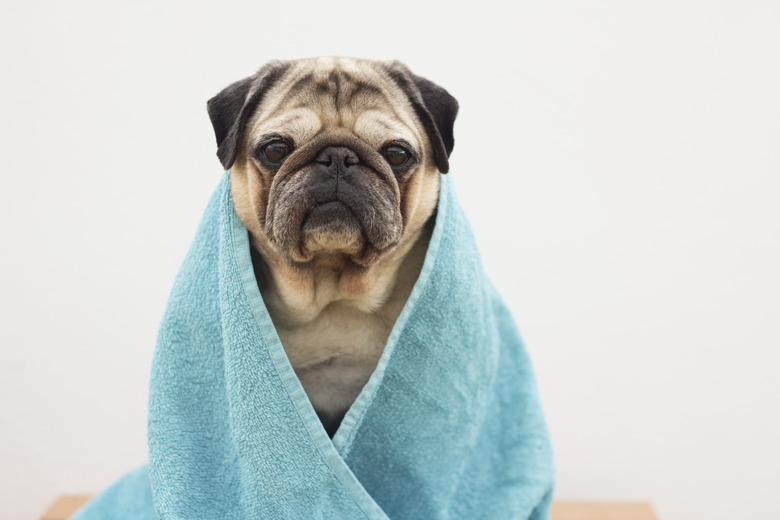Is Dr. Bronner's Safe For Dogs?
Your dog is smelly. It's been a while since he's had a bath, and you think he may have a flea problem as well. While you have a dog shampoo you usually use, you'd like to know whether or not you can lather up with your pup with Dr. Bronner's as well.
After all, Dr. Bronner's is a brand you've been using for years to wash your body and your hair. You love the fresh smell, the cool looking bottle, and the all-natural ingredients. If you've run out of dog shampoo, or you want to try something new, you could use Dr. Bronner's on your dog.
Why is it safe? Let's take a look at what exactly Dr. Bronner's is, and whether or not there are any concerns when it comes to washing your pets with it.
What is Dr. Bronner’s?
What is Dr. Bronner's?
Dr. Bronner's purports to be the top-selling soap in the U.S. natural marketplace. You can find it at places like Whole Foods, Sprouts, Bed Bath & Beyond, CVS Pharmacy, or your local health food store. It's certified vegan, fair-trade, non-GMO verified, and not tested on animals. Dr. Bronner's comes in a bar or liquid form, and it's a pure-castile soap, which means it's made of vegetables instead of synthetics and animal fats. Pure-castile is non-toxic and biodegradable, and it's made from natural oils like castor, hemp, avocado, coconut, almond, and walnut oils.
The ingredients in Dr. Bronner's include pure essential oils, jojoba and hemp oils, and organic extra virgin coconut. They come in different scents like eucalyptus, tea tree, lavender, almond, citrus, rose, and peppermint.
Is it safe to use Dr. Bronner's on my dog?
Is it safe to use Dr. Bronner's on my dog?
You can safely use Dr. Bronner's on your dog, with two caveats:
1) For the first time, you should only use a small amount and dilute it with water. This is because you don't know how your dog's skin is going to react to the essential oils. If he has sensitive skin, it could lead to a negative reaction. However, if your dog has itchy skin, the castile soap could be good for him, as it could be calming. As long as your dog reacted well the first time, then you can use the shampoo normally.
2) Be aware of the risks of using tea tree oil on pets. Dr. Bronner's only contains two percent essential oils, which is a very low amount, and which the Pet Poison helpline says is safe. If you use the tea tree oil scent of Dr. Bronner's, be sure to use only as directed. If you want to be super safe, you might opt to choose a different scent and avoid tea tree oil altogether.
Simply wet your dog's coat before rubbing on the shampoo, and make sure you avoid your dog's eyes, because the shampoo could irritate them. Another option is to make your own dog shampoo using a large bottle with 4 cups of water, 3 tablespoons of baking soda, and ½ a cup of castile soap. Once you've lathered up your pup, wash his coat thoroughly and let him air dry. Then, you'll be able to pet his silky smooth skin and smell the wonderful scent of Dr. Bronner's. Another bonus? It won't strip your dog's skin of its natural oils.
Does Dr. Bronner’s kill fleas?
Does Dr. Bronner's kill fleas?
Dr. Bronner's will kill fleas on your dog, but only while you're washing your dog. The castile soap also won't kill flea eggs. This means it won't have a long-lasting effect like a flea medicine would. Along with washing your dog when he has fleas, you should also throw his bedding in the laundry. You can mix together 1/3 cup of Dr. Bronner's in a top loading washer and incorporate ½ cup of vinegar into the washer's rinse cycle. If you have a high-efficiency washer, then just halve the mixture.
Precautions for washing dogs
Precautions for washing dogs
Dr. Bronner's should be perfectly safe for your pup, as long as he doesn't have overly sensitive skill and you don't get it in your dog's eyes. But, if you are hesitant to use Dr. Bronner's and would rather buy a regular dog shampoo instead, there are a few ingredients you should look out for.
You should never buy dog shampoo with artificial colors, formaldehyde, fragrances, isopropyl alcohol, parabens, mineral oil, or sodium laureth sulfate. These ingredients are chemical-based, rather than natural, and could be bad for your pup.
You also shouldn't use any human shampoo aside from Dr. Bronner's, since it could contain these harmful ingredients. It could also upset the pH value of your dog's skin and lead to skin problems, since humans have a different pH value and can tolerate certain ingredients.
Tips for washing dogs
Tips for washing dogs
When figuring out how often to bathe your dog, aim for once a month, or whenever your dog gets smelly. If your dog has oily skin, you may have to bathe him as much as once per week. Brush your dog's hair beforehand to rid of any knots and tangles, especially if your dog has a double coat.
Putting your dog in the sink, bathtub, or shower is fine. They won't love the outdoor hose because they don't like being cold, and they also may be afraid of the water shooting out at them. Dogs' skin is more sensitive to hot water, so use a lukewarm temperature when washing your pup.
Be calm during the bath, especially if your dog is upset, and offer him a nice treat afterwards as a reward. Don't use a blow dryer, because the heat could hurt your pup and the sound might startle him. They do make blow dryers for dogs, if you want to purchase one for grooming purposes.
If your dog is still smelly after a bath, you may need to have his anal glands expressed or go to the doctor to see if there's a more serious issue at hand. You could also visit a professional groomer as needed; they will be sure to clip the nails, trim your dog's overgrown hair and dry him off.
Whatever you choose to do—whether you're using Dr. Bronner's or not—your dog will be sure to appreciate more time with you, and you'll feel better that your pup is clean. Simply try a little bit of Dr. Bronner's to start to see if it's safe for your dog, and then tweak your bathing routine from there.
Always check with your veterinarian before changing your pet's diet, medication, or physical activity routines. This information is not a substitute for a vet's opinion.


